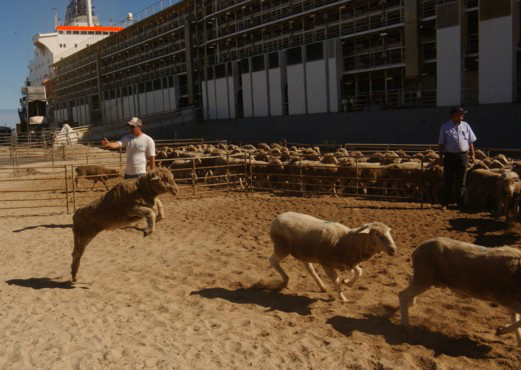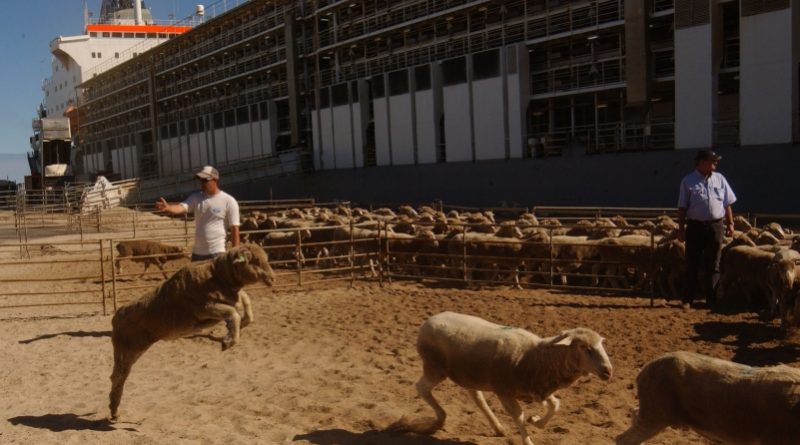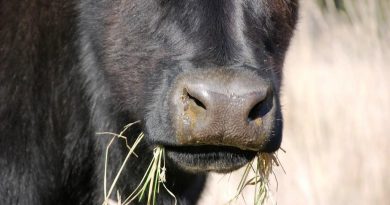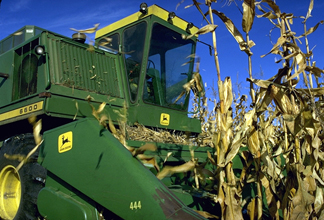Live animal export updates
The debate about wether or not live animal exports from Australia should continue or not is usually blurred by vested interests of participants in the trade, political agendas and ideological perspectives from outside of the livestock industry. For me the issue boils down to looking after livestock in a way which respects their natural behaviour (the five freedoms) and guarantees no cruelty take place from farm to slaughter in an abattoir. These guarantees can be achieved with all export livestock, the problem is with most sheep and some cattle consignments financial greed doesn’t allow for them so short cuts are taken around the five freedoms and animal cruelty takes place. I contend that the only successful, cruelty free live animal exports for slaughter only happens when Australian farmers and businesses have a stake (and responsibility) in the value-chain up to the point of slaughter. In such circumstances livestock shift from being a low-value commodity disconnected from the farmer at the farm-gate or port to an asset that increases in value in every part of the supply chain. This is clearly demonstrated in the live cattle export trade to Indonesia where Australian farmers and businesses have a stake in the value chain right through to slaughter and have introduced stunning for virtually all cattle in their supply chains. Back in 2010 an MLA expert panel report on livestock welfare in Indonesia abattoirs reflected on stunning as an “aspirational” goal. In three years as a result of publicity generated about the trade, stunning has become standard practice.
The current Australian government and in particular Agriculture Minister Joyce has lost the plot surrounding animal welfare and prevention of cruelty in the commodity live export sector, in particular live sheep exports. Joyce sees live exports as a quick fix for returning farm business profitability and fails to recognise how a commodity culture which it usually embraces (except for into Indonesia) is a doomed strategy for future farm profitability. Most food marketing experts now agree (see article “Farm profitability ignored in overseas investor and Food Bowl debates” in the Foster Debate basket on this site ) that future farm business profitability is associated with value-adding to commodities that deliver the foods and fibres with the QA and credence values increasingly wealthy consumers are prepared to pay for.
The Updates below are sourced from the RSPCA. It is an organisation with the most balanced perspective on live animal exports as it has no ulterior motives towards the sector other than preventing animal cruelty along the supply chain.

No place for inversion boxes in export markets
The RSPCA has called on the Australian Government to urgently update the current Exporter Supply Chain Assurance System (ESCAS) to prohibit the use of inversion boxes in abattoirs overseas. The calls comes after the Australian Government agreed to re-open the livestock export trade to Egypt under ESCAS.
The RSPCA says one of the two Egyptian abattoirs that have been approved to receive Australian cattle in the past, Ain Sokhna, uses an ‘inversion’ slaughter box that rotates cattle upside down prior to having their throats cut while fully conscious, and says the same device is approved for use in several other ESCAS supply chains.
“Inversion slaughter boxes are unquestionably cruel and have no place in an Australian approved facility,” RSPCA Australia Chief Scientist Dr Bidda Jones said yesterday. “Even when these slaughter devices are working properly they’re incapable of delivering good animal welfare outcomes, yet the government has failed to act to remove them.
“If the Australian public and cattle producers knew the full details about the suffering that cattle endure in these devices, they’d be horrified.”
The RSPCA is also calling on the government to release the slaughter assessment reports from the four Department of Agriculture veterinarians sent to Egypt in 2013 as part of the 2013 investigation and explain why required animal welfare audits of the two abattoirs were never conducted.
“Despite previous arrangements (MoUs) having many of the hallmarks of ESCAS, they failed to protect Australian cattle from significant and ongoing cruelty – how can the Australian public trust it will be any different now?” said Dr Jones. “Egypt has an appalling record in animal welfare and we have no confidence that ESCAS will deliver anything better.”
This was confirmed by the RSPCA with the release of a government investigation into export abattoirs in Egypt.
Investigation confirms cruelty
Last May Animals Australia provided the government with shocking evidence of Australian cattle suffering in two Egyptian abattoirs. The horrific vision showed cattle being stabbed in the face and eyes, having their tendons slashed and being restrained in slaughter boxes that turn them upside down before having their throats cut while fully conscious. Trade to the country was suspended.
The Department of Agriculture report found that the arrangements in place did not consistently protect Australian cattle sent to the Ain Sokhna and Ismailia abattoirs, despite a long-standing agreement with the Egyptian authorities that minimum animal welfare standards would be met. It is clear from this report that the Australian Government and live exporters failed in their duty of care to the Australian animals exported.
These arrangements were originally put in place in response to appalling cruelty exposed at Cairo’s Basateen abattoir in 2006. When the Government re-opened the trade in 2008, RSPCA Australia highlighted serious animal welfare concerns about the restraint boxes used in these facilities. This report confirms these fears, yet inversion slaughter boxes continue to be approved under the governments Export Supply Chain Assurance System (ESCAS). Source: RSPCA 20 March 2014
Cancellation of MoUs
RSPCA Australia is disappointed at the announcement on 28 February 2014 from the Minister for Agriculture, Barnaby Joyce, that Memoranda of Understanding (MoUs) will no longer be required for new overseas export markets before Australian livestock can be exported.
While MoUs are not legally binding, the importance of negotiating the terms under which live export can be conducted, and setting out agreed processes should normal arrangements fail, should not be underestimated.
According to the Department of Agriculture website, “A key element of these MoUs is that animals be unloaded on arrival regardless of their health status. The MoUs also allow us to help our trading partners improve post arrival handling and slaughter through cooperative activities based around improving animal welfare”.
Without these arrangements, there will be no measures in place in new markets to reduce the potential for rejected cargoes such as the Ocean Drover by Bahrain in 2012, or the Cormo Express by Saudi Arabia in 2003. In the case of the Cormo Express, 57,000 sheep were left stranded at sea for three months: 6,000 died on board ship. When the Ocean Drover was rejected by Bahrain in September 2012, the 21,000 Australian sheep on board were brutally culled in Pakistan because of concerns over their health status.
The dismissal of MoUs is yet another step backwards for animal welfare by the Coalition government, following its dismantling of the Australian Animal Welfare Strategy at the end of 2013 and the closing of the Department’s Animal Welfare Branch, which shuts its doors on 28 February 2014.




Great article. The pictures of cattle in inversion boxes haunts me often. The animal tipped upright after the throat cut obviously still trying to breath and choking on its own blood with its throat gaping wide. Absolutely ghastly. Every farmer who sends animals to live export should be forced to watch all of the footage of dreadful animal cruelty. Process animals in Australia with CCTV and provide live feeds whi h anyone can monitor.